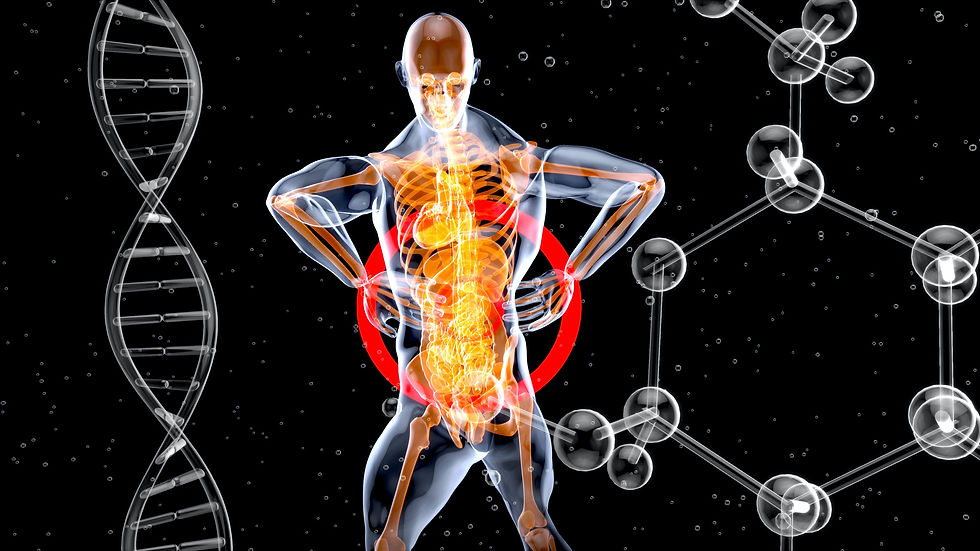
What is FOXO3 (Forkhead/winged helix box gene group O3)?
FOXO3 is a major longevity-associated gene. The FOXO family of genes that are involved in so many biochemical processes related to aging and lifespan. These include:
Energy metabolism
Oxidative stress
Proteostasis
Apoptosis
Cell Cycle Regulation
Metabolic processes
Immunity
Inflammation
Stem Cell Maintenance
DNA Repair
Autophagy
Mechanisms by which FOXOs influence healthy aging.
FOXO is involved in translating environmental stimuli from insulin, growth factors, nutrients, and oxidative stress into specific gene expression programs in our cells. The role of FOXO in longevity may involve turning on target genes involved in stress resistance, metabolism, cell cycle arrest, and apoptosis. Control of the FOXO3 in response to environmental stimuli is likely critical to preventing aging in age-related diseases including cardiovascular disease, type II diabetes, cancer, and neurodegenerative diseases.
Caloric restriction (CR), the well-known longevity-associated intervention, results in the activation of sirtuins, leading to activation of FOXOs, this results in improved autophagy, and amino acid recycling via inhibition of mTOR activity, and other mechanisms. Engaging this process through CR is associated with a healthy aging phenotype. From a mechanistic view, this process (CR) helps to maintain the oxidation state of the cell by cycling calories through the mitochondria so as to restore NAD+ levels. On the other hand excess calories, particularly from carbohydrates, increases the NADH/NAD+ ratio and leads to lipogenesis, overproduction of ROS by mitochondria, and poor autophagy. Neither pathway is good or bad, we need both to be turned on and off. The problem is when we are in a constant fed-state and never provide our bodies time to turn on these recycling pathways. This lead to disease and faster aging. https://www.ncbi.nlm.nih.gov/pmc/articles/PMC5403515/
If you have 23andMe data you can check to see if you have an advantageous allele for longevity. Here's how to check:
Instructions on how to determine your FOXO3 Status:
1) log in to 23andMe
2) Click the dropdown menu in the top right by your name.
3) Click “Browse Raw Data”
4) Type rs2802292 and search
5) Write down what’s written under “Your Genotype”
rs2802292
T/T Normal
G/T Heterozygous- associated with 1.5-2 times increased likelihood of living to be a centenarian
G/G Homozygous- associated with 1.5-2.7 times increased likelihood of living to be a centenarian

How do we turn on FOXO3?
When you make more FOXO3, you triple your chances of living to one hundred. Besides being naturally blessed with the right genetics, the other ways to turn this gene on are by sitting in a hot, dry sauna or infrared sauna for 20 minutes, 4 times per week or more. The hormetic effect of sauna use is associated with activating FOXO3, sirtuins, and mTOR. Activation of FOXO3 turns on genes for stress resilience, antioxidant production, protein maintenance, DNA repair, and cancer cell death. Intermittent fasting turns on SIRT1 and turns off the mTOR gene activating autophagy. Autophagy translates as "self-eating", this is when our body breaks down old cells to recycle their contents. Essentially autophagy takes old cells and organelles and breaks them down in order to release amino acids, fatty acids, sugars, and nucleosides for reutilization.
Why do we want to turn on autophagy? Senescent cells are like zombies, they aren't quite alive and aren't dead either, they are arrested at a state prior to death. One of the hallmarks of aging is an accumulation of senescent cells. These cells aren't exactly harmless, they secrete pro-inflammatory cytokines that can cause damaging effects to nearby cells. FOXO3 is like zombie patrol, it turns on the genes that control autophagy (mTOR). Autophagy is programmed cell death, a way of recycling these senescent cells. FOXO3 is activated by caloric restriction and intermittent fasting, well-known mechanisms for turning on autophagy. It can also be activated by flavonoids, such as EGCG, which is found in green tea, and by quercetin, which is found in onions and apples and can also be taken by supplementation.
What else does FOXO3 do?
FOXO3 also modulated immune function, which aids the body in patrolling for viruses, cancer cells, and bacteria that enter the body but shouldn't be there. FOXO3 also aids in turning on heat-shock proteins. Heat shock proteins make sure that the other proteins in your body are properly folded. If they aren't properly folded they can cause damage like atherosclerosis, neurodegenerative diseases like Alzheimer's, and congestive heart failure, leading to a shortened lifespan. Heat shock proteins also neutralize oxidative stress in the body, which is essentially like rust build-up.
I discovered that not only do I have the FOXO3 G/G allele giving me a higher chance of living past 100, but I am also a percentage Sardinian. Sardinia is one of the Blue Zones (areas that have higher percentages of centenarians). While I was already a health nut, this inspired me, even more, to stick with my healthy habits. If I plan to live to 100 and beyond I want to do so in a healthy way, I want to extend my healthspan (the number of healthy/disease-free years), so I can enjoy my life and continue to do all the things I love.


Comments